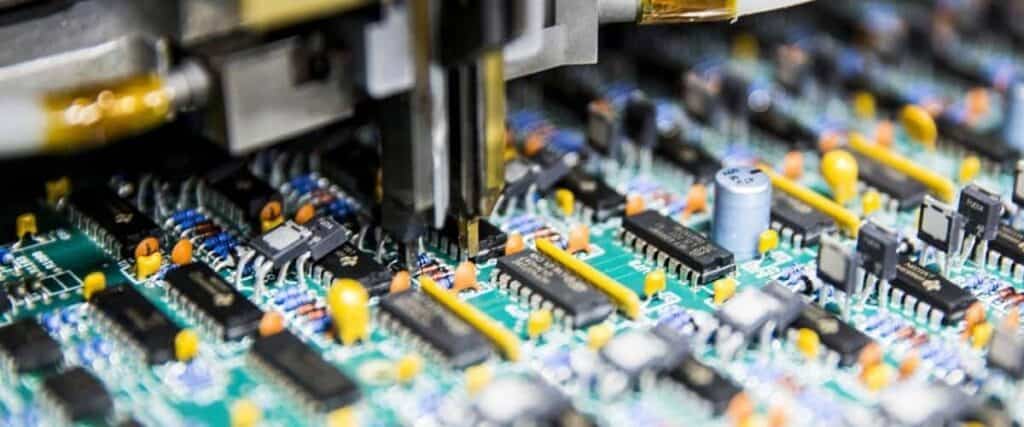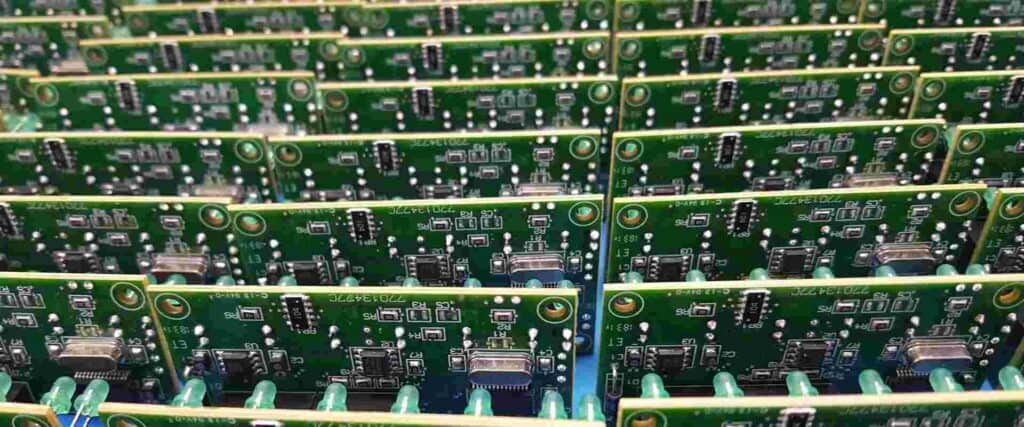Introduction
For electronics product developers, the ability to rapidly assemble printed circuit board (PCB) prototypes is critical during the design verification and testing phases. Choosing a quick turn PCB assembly service enables getting working boards assembled in just 1-2 weeks, compared to 4-6 weeks typically.
This guide covers key considerations when selecting a rapid PCB assembly partner to accelerate your project schedule.
Benefits of Quick Turn Assembly
Here are some of the major advantages of quick turnaround PCB assembly for prototypes:
- Faster design validation – Assemble boards quickly to test in real-world conditions.
- Accelerate time-to-market – Shortened development timeline gets products to market quicker.
- Rapid design iteration – Swiftly build and test modifications rather than long re-spins.
- Meet tight deadlines – Satisfy demanding schedules and deadlines.
- Flexibility – Make changes in components or design closer to build time.
- Lower costs – Reduce development costs through compressed timelines.
For these reasons, quick turn assembly is highly useful during development, validation, and pre-production phases.
Capabilities Needed for Fast Assembly

To enable quick turnaround PCB assembly, look for an assembly partner having the following key capabilities:
- Fast SMT assembly – High-speed SMT lines to assemble boards rapidly.
- Quick component sourcing – Inventory or supply-chain to procure parts on-demand fast.
- Inventory management – Systems to store and kit components for each customer’s order.
- Efficient test and QC – Rapid testing procedures to validate assemblies and avoid delays.
- Flexible small batch sizes – Capability to assemble low quantities of even 1-5 boards.
- Fast shipping – Offer express shipping options to get boards delivered quicker.
- Engineering support – Experts to resolve assembly issues to prevent delays.
Assembly Processes for Accelerated Turnaround
The assembly partner should utilize optimized processes designed for speed:
- Non-standard pad sizes – Allow hand assembly and rework of components.
- Specialized test points – Test pads to inspect signals and debug issues quickly.
- On-demand procurement – Swiftly order any long-lead components that may be needed.
- Parallel workflows – Simultaneously work on sourcing, assembly, inspection and test.
- Prioritized scheduling – Realign production schedules to assign top priority for rush turn prototypes.
- Direct communication – Engineers accessible for real-time technical queries during assembly.
Selecting a Quick Turn Assembly Partner
Use the following criteria when selecting an EMS partner for quick turn prototypes:
- Proven quick turn track record – Ask for examples of previous rush jobs completed in under 2 weeks.
- Specialization in prototypes – Choose an assembly house focused on prototypes, not just volume production.
- All-inclusive pricing – Seek fixed pricing covering components, assembly, test and shipping.
- Order flexibility – Partner should support assembly of 1-5 boards without high minimums.
- Engineering expertise – Company having veteran engineers on staff to tackle assembly issues.
- Domestic location – Preferably in the same country to avoid border delays.
- Production scale capability – Partner that also has large-scale assembly lines for future scalability.
Cost Impact of Expedited Assembly
While the time savings are significant, quick turn assembly does come at a higher cost. Typical premiums to expect are:
- Rush fees – Upcharges of 25-50% over standard assembly pricing.
- Air shipping – Express courier charges to get boards faster.
- Inventory costs – Premiums on procuring components faster from local distributors.
- Resource reallocation – Labor cost of shifting shop floor staff to prioritize quick turn job.
- Potential delays – Financial risk of any delays disrupting tightly scheduled assembly.
So ensure your budgets account for the higher costs. The accelerated development time can justify the premium expense in most cases.
Summary of Key Points
In summary, here are the best practices for rapid turnaround PCB assembly:
- Select an assembly partner specialized in fast prototype builds.
- Verify their capabilities match your quick turn requirements.
- Budget for rush fees and other expedited processing costs.
- Keep component types and quantities low.
- Review design for assembly and testability.
- Plan logistics for fast component procurement.
- Maintain close communication for real-time feedback.
- Expect to make some design tweaks post-assembly when needed.
Frequently Asked Questions

What is the typical lead time for quick turn assembly?
Most assembly providers can deliver fully assembled boards in 1-2 weeks with expedited turnaround options.
What is the minimum order quantity for quick turn services?
Many assembly houses will build single or small batches of 1-5 boards for prototypes requiring fast turnaround.
Is it better to hand assemble or use SMT assembly for very fast turnarounds?
For 1-5 boards, hand assembly may be faster, but for batches above 5, SMT will be much faster.
How early should I engage the assembly partner for quick turn?
At least 2-3 weeks in advance to allow time for planning, procuring long lead components, and scheduling.
Are there any risks associated with quick turn assembly?
Yes, the accelerated schedule leaves less room for error. There is higher chance of unexpected delays or component shortages.



0 Comments